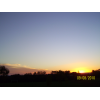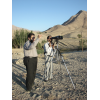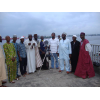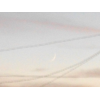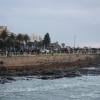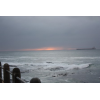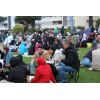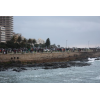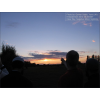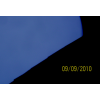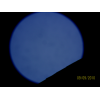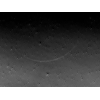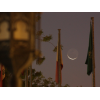Visibility of Shawwal Crescent 1431 AH
- When to Observe Shawwal Waxing (NEW) Crescent ?
- Shawwal Waxing (NEW) Crescent Observation Results
- The OFFICIAL First Day in Different Countries
- When to Observe Ramadan Waning (OLD) Crescent ?
- Ramadan Waning (OLD) Crescent Observation Results
- ICOP Shawwal Official Statement
When to Observe Shawwal Waxing (NEW) Crescent ?
The geocentric conjunction (Geocentric New Moon) will occur Inshalla on (Wednesday 08 September 2010) at 10:30 UT.
Sighting the new crescent on (Wednesday 08 September 2010) and (Thursday 09 September 2010) is shown in the below graphs using the program Accurate Times by Mohammad Odeh according to Odeh criterion. Where:-
- It is impossible to see the crescent from the areas located under the red color. Because either the Moon on this day sets before the Sunset and/or the topocentric conjunction occurs after the Sunset.
- The crescent is expected to be seen by optical aid only from the areas located under the blue color.
- The crescent is expected to be seen by optical aid from the areas located under the magenta color. In these areas the crescent could be seen by naked eye if the atmospheric conditions are superb and the observer is experienced.
- The crescent is expected to be easily visible by naked eye from the areas located under the green color.
- The crescent cannot be seen from uncolored areas, even though the Moon sets in these locations after the Sunset and the topocentric conjunction occurs before the Sunset, but the Moon is not sufficiently illuminated in order to be seen as crescent even by optical aid.
- Kindly notice that the below graph shows the possibility of seeing the crescent from areas between 60 degrees north of Equator down to 60 degrees south of Equator.
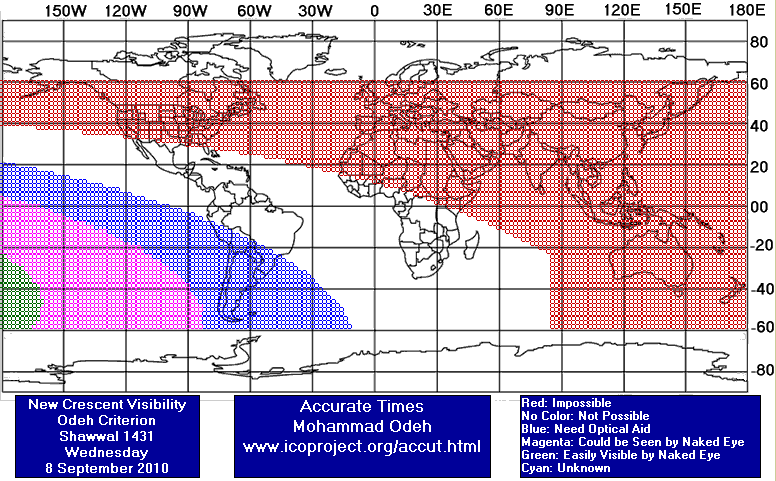
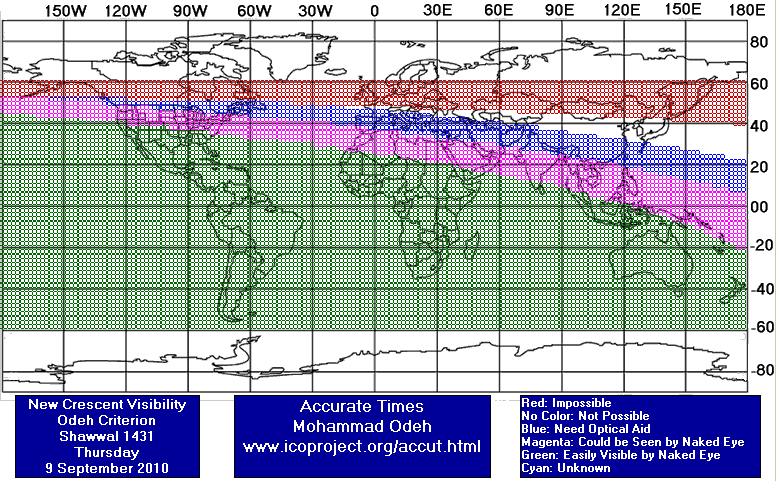
According to the Universal Hejric Calendar (UHC), which is based on the calculated crescent visibility, the start of this month in the Eastern Region will be on Friday 10 September 2010 and in the Western Region will be on Thursday 09 September 2010. Kindly notice that the UHC is a pre-calculated calendar, which adopts a certain criterion to start the new Hejric month. Your country/organization might adopt different criterion to start the new Hejric month. So it is highly advised to read the UHC website before giving any judgment.
- Results of seeing the crescent, and the first day of the month in different countries will be added here Inshalla as we receive the reports from ICOP's members. If you wish to be a member in ICOP, or to know more about it, kindly click here.
Shawwal Waxing (NEW) Crescent Observation Results
Wed 08 September 2010
United States
Dr. Javad Torabinejad said: "This evening (Wednesday, September 8, 2010), the crescent moon of Shawwal was not sighted in Blacksburg, VA, using a pair of (10X50) binoculars. I arrived at the sighting location at 7:13 (sunset: 7:39 pm EDT) and started looking for the crescent in the expected location with the sun about 8-10 degrees to the right. I continued looking for the moon till 7:37 (moonset: 7:33 pm EDT).The western horizon was partly cloudy with some haze."
Thu 09 September 2010
Australia
Mr. Afroz Ali said: "The crescent was sighted in a few cities around Australia."
Bangladesh
Mr. ABM Ruhul Hassan said: "The Shwaal crescent was not seen from Bangladesh on 9 Sep, Thursday. The western horizon was partially cloudy in Dhaka but there were clear horizon in other parts of the country.The crescent altitude was at below 6 degree during sunset.we are going to observe Eid-ul-Fitr on 11 September,saturday in bangladesh. "
Ghana
Mr. Abdul-Aziz Anyang said: "At 18:05 I came out to look for the crescent. There were clouds all over the western horizon where the sun had set. As the clouds moved away from where the sun had set, I tried to locate the crescent to no avail. I called the Northern region in Ghana which is about 600 Km away from the Greater Accra region and spoke with Mohammed to try and look for the Shawaal crescent. I also called Malam Yusif of Afienya, Odoomser to sight the crecent from his location. At exactly 18:20 , Malam Yusif called to give me a confirmation that he had seen the crescent (with two people) as he is travelling from the the Volta region of Ghana to his location at Afienya. Also at exactly 18:34 Mohammed in Tamale called for same confirmation. In Accra also it was seen by Shk Abdul-Kadir (one of the members of the National Hilal Committee). "
Iran
Mr. Mohamad Soltanolkottabi said: "Date: Thursday, Sep 9th 2010 Members of the group: Mohamad Soltanolkottabi, Ahmadreza Karimi & Daryush Zolfaghari Rad Apparent Sunset: 19:16 Instruments: SXD-R200SS Vixen 8 inch Telescope, GPD2-R200SS Vixen 8 inch Telescope, 20*90 binoculars , 20*110 binoculars, Atmosphere: Superb ,a very nice blue sky! Elongation at the first observation time: 13.7 D Explanation : We used astronomical objects to lock our instruments on several positions where the new crescent would cross on the 9th. We were sure that the crescent would pass through the 20*110 binoculars at 9:37 , through the 20*90 at 15:54 & through the first telescope at 9:30 & through the second one at 11:00 Thursday. Mr. Zolfaghari Rad saw the crescent at 11:17 as the first observation through the GPD2-R200SS Vixen 8 inch Telescope. Mr. Soltanolkottabi saw it just after that at 11:18 . Mr. Soltanolkottabi hunted the crescent for the second time at 15:52 through the 20*90. We also tried to observe the Moon a few minutes before the sunset. Fortunately we were successful to see it through the 20*90 ! Mr. Karimi could see the Moon for the first time at 19:17 & then all of us could see the crescent for a few minutes. "
Mr. Nima Mossayebi said: "Observation group:Mr. Nima Mossayebi (head, observer), Mr. Hesam Moradi (Observer),Ms. Hajar Ahmadzadeh (assistant),Mrs. Yekta Mohammadi (assistant). Start of the observation: 13:00 other equipments: 20*90 binaculars The crescent was also seen by 20*90 binaculars. The only member able to see the crescent was Mr. Hesam Moradi The planet Venus was used to calibrate both Binaculars. Weather conditions: clear sky, partly cloudy and very hazy at sunset, High winds"
Jordan
Ms. Basma Dhiab said: "About 45 persons including children with their families shared us this observation. Once the sun set, we all had our breakfast, then immediately we tried to observe Shawwal crescent. The sky was clear but there was haze in the western horizon. We used a transparency chart to locate the steps of the crescent every 5 minuties,and we used binoculars, but it was about 4.5 degrees only above the horizon. Unfortunately, we couldn't see it. But as usual, people were happy to attend this meeting outdoors. "
Libya
Mr. Salem Sahid said: "the aeed was today 09/09/2010 according to astronomical calculations and not to crescent observation."
Nigeria
Mr. Abdul-Rasaq Abdul-Azeez Ishola said: " Youth of Muslim Jubilee Estate of Ikorodu Lagos State and I, tried to search for the Shawwal Crescent this evening after the sunset but we were unable to see the crescent due to the cloud but Possitive report came to us from Kano, Bauch and Abuja. Happy Eid to you all. Once again A big Kudos to the man, who gave Knowledge what it deserve, the Sultan of Sokoto Sa'ad Abubakr. This is the kind of Unity we are dreaming. "
Mr. Uthman Basheer Kunle said: "I and other brothers in Ilorin, Kwara state area of Agbo-Oba Opposite First Apostolic Church tried to look for the shawwal crescent today but it was not seen because there is Rain. Eid Mubarak To u all."
Mr. Qamarudeen Muhammad said: "Alhamdulillah, The new Hilal of Shawwal was not visible here at Agege, Lagos due to Overwhelm overdcast however (I am about to send this report when Abu Aisha Called me, that New Hilal of shawwal was sighted at Amukoko an environ of lagos state) and in phone chat with Amir Lajinat Ilorin cities, he confirmed that it was raining in Ilorin hence they couldnt sight the hilal of shawwal. From Bauchi (Mallam Usman Dukku) and Abuja (Usman Mahmud) there are positive sighting from the respect place. And in a twist of fate, indeed i am the most happiest person in the world for the simple reason that all my household will mark this eidul on the same day (i.e. Friday 10, September 2010). I pray Allah to bring happiness and tranquility to every home as we celebrate this eidul fitri 1431AH."
Pakistan
Mr. Alam Sultan said: "Today (Thursday, 9 September 2010 = Pakistan: 29 Ramadhan 1431), I also requested many members of the moon-sighting committees of our institute "JAMIA-TUR-RASHEED" and many of my friends all over Pakistan to sight the moon but the moon could not be sighted. Generally the weather was cloudy and hazy but it was clear at many places. Our members tried to sight the crescent moon at nearly 60 places in all 4 provinces with many hundred persons. Note 1: Central official moon-sighting committee of Pakistan also announced that because they did not receive any positive report of moon sighting from all over Pakistan, therefore Friday 10th September 2010 is the 30th Ramadhan and Eidul-fitr (1st Shawwal 1431) will fall on Saturday 11 September 2010 in Pakistan. Note 2: After some days, inshaallah, a detailed report of our observation will be available at www.esnips.com/web/moonnewsofjamiaturrasheed "
Philippines
Mr. Abu Ammar Mangorangca said: "The moon was seen by many witnesses in at least 3 places: Sibutu Island, Sulu and South Cotabato -- all in extreme western and southern Philippines where weather was clearer this evening. Cloudy sky was common in the north and central parts of the country due to a passing low pressure area. The Sibutu sighting was confirmed by the head of the local tabligh chapter, Maulana Tariq.The other sightings were likewise made by members of the tabligh movement who are found in all parts of the Philippines. "
Senegal
South Africa
Dr. Abdurrazak Ebrahim said: "Inclement weather in Cape Town. The Hilaal was sighted by reliable persons in various places in north eastern South Africa [Durban, Pietermaritzburg, Howick, Newcastle, Nelspruit]."
Tanzania
Mr. Zaffar Sheriff said: "The 28+ hour crescent was easily seen just four minutes after local sunset. Tomorrow Friday is 1st Shawwal in Tanzania. Eid Saeed to all"
United Kingdom
Eng. Qamar Uddin said: "On Thursday 9 September 2010 (29 Ramadan 1431 AH) many people from throughout UK including York have attempted to sight the crescent moon (Hilal) of Shawwal after sunset. Most places were clear but none of the groups were able to sight the Hilal. However, we have received reliable sighting news ((Muhaqaq Ruyat-e-Basari) from many other countries (including Morocco and South Africa). Therefore, the Ulama in UK have decided that the month of Ramadan 1431 AH will have 29 days and the month of Shawwal 1431 AH will start from Friday 10 September 2010 (i.e. day of Eid-ul Fitr), Insha-Allah. The York group comprised of Qamar Uddin with a few astronomers from York Astronomical Society and a team from Batley (Maulana Hasib Mayet, Maulana Imran Lunat, Maulana Abubaker Diwan, Suleman Motala, Mohammed Patel, Ismail Patel,Shakir Daji & Vashiullah Bodiayat). May Allah rewards all those who have attempted to revive the Sunnah of moon sighting, this month (Ameen). Eid Mubarak to all Muslims!"
United States
Dr. Javad Torabinejad said: "Today (Thursday, September 09, 2010), my wife, daughter, and I were able to sight the moon first by using a pair of 7X50 binoculars and then by naked eye in Blacksburg, VA. The first binocular sighting was at 2:30 pm (sunset 7:38 pm EDT; moonset 8:06 pm) soon followed by naked eye sighting. To find the moon's location, I used the Sky & Telescope Interactive Sky Chart. The moon was about 15 degrees to the lower left of the sun (the sun was blocked by our house). The horns were at 12:30 and 4:30 O'clock (12:30;3:00;4:30)."
The OFFICIAL First Day in Different Countries
Thu 09 September 2010
1 . Libya
Fri 10 September 2010
1 . Algeria
2 . Australia
3 . Bahrain
4 . Egypt
5 . Ghana
6 . Iran
7 . Iraq
8 . Jordan
9 . Kuwait
10 . Lebanon
11 . Mauritania
12 . Morocco
13 . Nigeria
14 . Oman
15 . Palestine
16 . Philippines
17 . Qatar
18 . Saudi Arabia
19 . Senegal
20 . South Africa
21 . Spain
22 . Sudan
23 . Syria
24 . Tanzania
25 . Tunisia
26 . United Arab Emirates
27 . United Kingdom
28 . Yemen
Sat 11 September 2010
1 . Pakistan
When to Observe Ramadan Waning (OLD) Crescent ?
The geocentric conjunction (Geocentric New Moon) will occur Inshalla on (Wednesday 08 September 2010) at 10:30 UT.
Sighting the OLD crescent on (Wednesday 08 September 2010) and on (Tuesday 07 September 2010) is shown in the below graphs using the program Accurate Times by Mohammad Odeh according to Odeh criterion. Where:-
- It is impossible to see the OLD crescent from the areas located under the red color. Because either the Moon on this day rises after the Sunrise and/or the topocentric conjunction occurs before the Sunrise.
- The crescent is expected to be seen by optical aid only from the areas located under the blue color.
- The crescent is expected to be seen by optical aid from the areas located under the magenta color.. In these areas the crescent could be seen by naked eye if the atmospheric conditions are superb and the observer is experienced.
- The crescent is expected to be easily visible by naked eye from the areas located under the green color.
- The crescent cannot be seen from uncolored areas, even though the Moon rises in these locations before the Sunrise and the topocentric conjunction occurs after the Sunrise, but the Moon is not sufficiently illuminated in order to be seen as crescent even by optical aid.
- Kindly notice that the below graph shows the possibility of seeing the crescent from areas between 60 degrees north of Equator down to 60 degrees south of Equator.
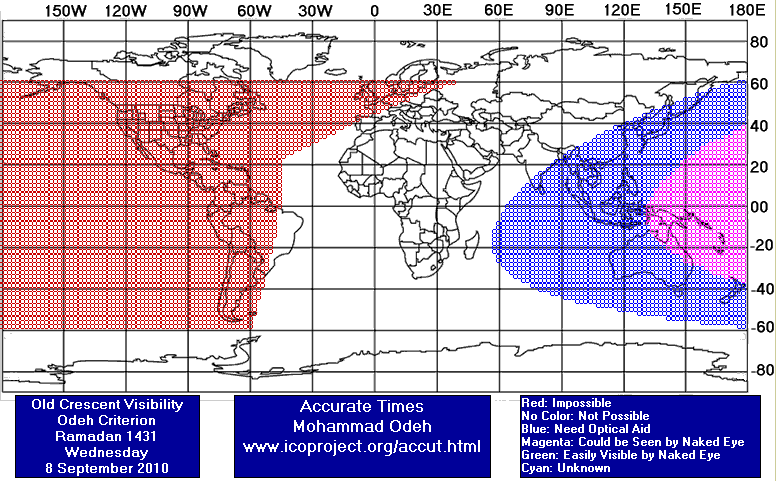
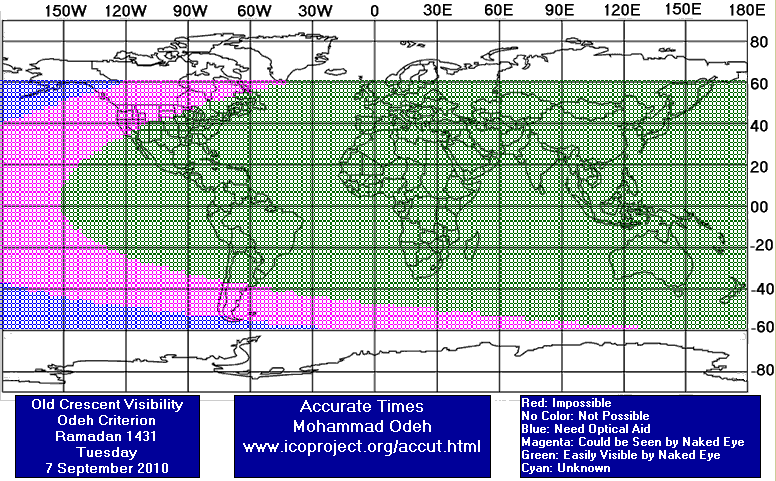
Ramadan Waning (OLD) Crescent Observation Results
Tue 07 September 2010
Ghana
Mr. Abdul-Aziz Anyang said: "Sorry for the late reporting as we had long hours of power (electricity) off. I did not see it from my location which is a low area. A colleague friend - Mohammed Sulemana (233 244 28794) called me after Fajr prayers and said that he saw it and even as we spoke he could still see it very clearly in the eastern horizon. "
Qatar
Eng. Mohammad Odeh said: "The waning crescent of Ramadan was seen by CCD imaging during broad daylight time. "
Saudi Arabia
Eng. Martin Elsaesser said: "The old crescent was easily visible in the morning, just stepping outside a hotel in medina."
United Kingdom
Eng. Qamar Uddin said: "On Tuesday 7 September 2010, it was raining all night in York and totally cloudy in the morning before sunrise so I did not see the waning crescent moon of Ramadan 1431. However, I have received a sighting report from London. Also, yesterday (6 September 2010) I received a report on my mobile phone that it was sighted in Batley and the shape was approximately 3 o'clock to 10 o'clock (i.e. right of sunrise position)."
Mr. Syed Hashmat Wasty said: "The sky before 5-00a.m. was heavily cloudy and it had rained in the night. But as was forecast by the Weather Centre, the sky started to clear up by 4-30 a.m. leaving me a very clear view of the Eastern sky by 5-00 a.m. and thus I was able to see the waning crescent by 5-35 a.m."
ICOP Shawwal Official Statement
Eid al-Fitr for 1431 AH on Friday, 10th September, 2010
Most Muslim countries started Ramadan on Wednesday, August 11th. Others started on Thursday, August 12th, including Oman, Morocco, Mauritania, India, Bangladesh, Pakistan, and Iran.
For those countries that started on August 11th, the 29th of Ramadan will be on September 8th. On that day, however, it will be impossible to sight the crescent from any of the Muslim countries, nay, from any of the Asian, European or African continents, because the moon will set before the sun. Hence, these countries are expected to complete 30 days in the month of Ramadan, and that will make Eid fall on Friday September 10th.
The participants in the second Emirates Astronomical Conference that was held in Abu Dhabi this past May-June and which included many experts in the fields of Astronomy and Shari’ah (Islamic Jurisprudence) from all over the world, including scholars from Muslims living in the West, recommended that when the moon sets before the sun on the 29th of Ramadan, people not be asked to go out and seek to observe the new crescent. Those who made this suggestion were experts in Fiqh; their reasoning was: it does not make sense to ask people to sight something which is not there. They also emphasized that this does not contradict the Sunnah of our beloved Prophet, peace be upon him, since this recommendation is only for cases where the moon is not there in the sky. Hence we ICOP recommend that governments in the Muslim world, not ask their citizen to sight the crescent moon on September 8th, 2010.
As for those countries which started the month on Thursday, the 29th of Ramadan will be on September 9th, and on this day, the moon will be easy to sight from most Muslim lands, either by naked eyes or with the help of binoculars or telescopes. Hence it is expected that Eid will be on Friday, September 10th there as well. But for countries like Pakistan which require the sighting to be with naked eyes only and/or within their boundaries, it will be very hard to sight the moon on Thursday, in which case Ramadan would be completed in 30 days and Eid would be on Saturday, September 11th.
As to Libya, which does not require the physical sighting of the moon, but requires only that the Earth-Moon-Sun conjunction occur before Fajr, Eid will be on September 9th.
To know more about the possibilities of observing the moon for the month of Shawwal, please visit the Islamic Crescents Observation Project (ICOP) website (http://www.icoproject.org).
ICOP was established in 1998; its more than 400 members are scholars and experts in Astronomy and Islamic Jurisprudence interested in issues of crescent observation and Islamic calendar. ICOP encourages everyone all over the world to observe the moon and send their observation results to the ICOP website. After authentication, those reports are published on the appropriate webpage.
For the ICOP’s Administrative Board
Mohammad Odeh (ICOP Chairman)
